
Definition and Example Sentences with Narrative Tenses Table of Contents What are Narrative T
Change of Tense:-. 1. The tense of the Reporting Verb is never changed. 2. The tense of the Reported Speech is changed as under:-. a. If the tense of the Reporting verb is present or future, the tense of the verb in the Reported Speech is not changed. b. If the tense of the Reporting verb is past, the tense of the verb in the Reported Speech is.

Direct and Indirect Speech Spoken English Guru
1. Simple Present to Simple Past Direct: He said, "The boy goes home." Indirect: He said that the boy went home. 2. Present Continuous to Past Continuous Direct: Ram said, "I am reading a book." Indirect: Ram said that he was reading a book. 3. Present Perfect to Past Perfect Direct: The girl said, "I have lost my pen."
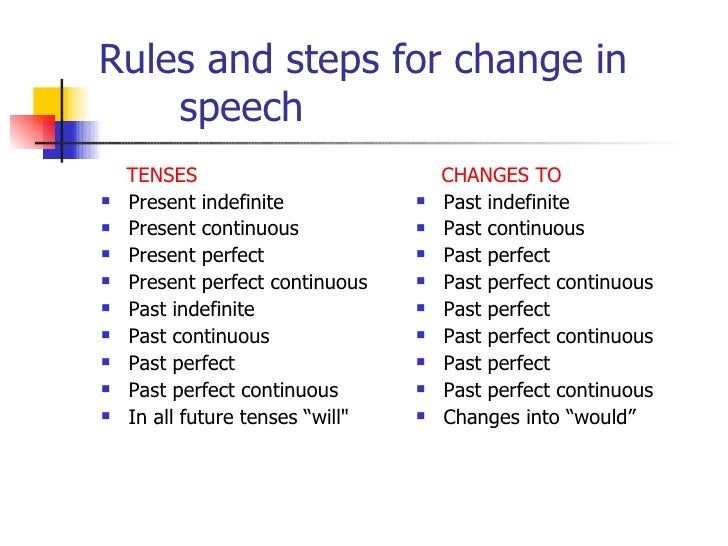
Direct & Indirect Narration
Here, we have tried to cover Direct and Indirect Speech through this blog. We are providing rules, example and exercise to help you with this topic. Reported Speech is also known as Direct and Indirect Speech or Narration. In Indirect Speech, we convey the speaker's message in our own words. Thus, the message can be conveyed in 2 ways. Direct.

MAGIS Narration, Exercise
Direct: The general said to his soldiers, "Fire.". Indirect: The general commanded his soldiers to fire. Direct: He said to me, "Do not break the rules.". Indirect: He ordered me not to break the rules. Direct: The teacher said to the students, "Be selfless.". Indirect: The teacher advised the students to be selfless.

Narration Rules of Different Kinds of Sentences VK Study
Direct and Indirect Speech : Direct speech is a method of reporting what someone has said in their own words. It is frequently surrounded by quotation marks. Indirect speaking is a method of relaying what someone has said without using their precise words. It is frequently preceded by a verb like "said," "told," or "asked.".

Narration Rules In Bangla Easy grammar, Teacher assistant, School college
in this video we will teach you direct indirect, reported speech, narration rule . in this video we will teach you important rules of direct and indirect whi.
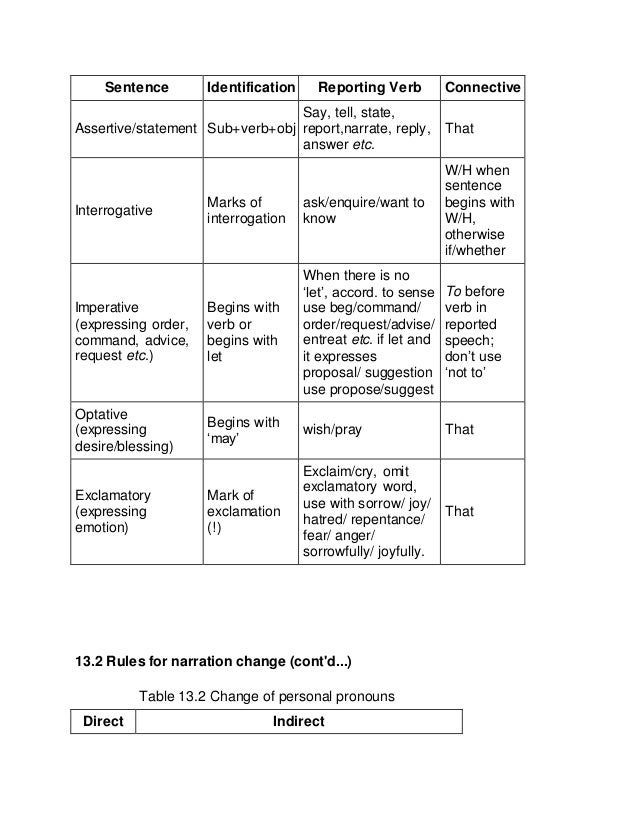
Narration
Narration is one of the fundamental concepts of English grammar. It refers to the way in which a story is told. It is the act of recounting an incident or event, usually in a sequential manner. The most basic form of narration is when a person tells a story about something that happened to them. However, narration is also used in literature.
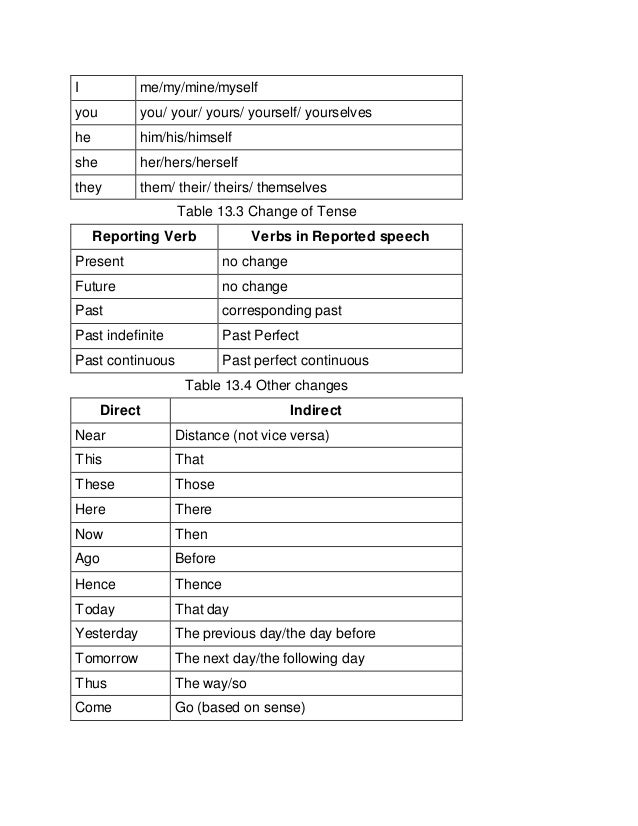
Narration
Narration Rules: Direct and Indirect speech Shabab Junayed April 24, 2022 ⸱ 5 min read The way we talk or we narrate any story is called narration. There are mainly two ways how a speaker reports words to narrate anything. What are the types of narration? The two ways to report the words of a speaker are known as Direct Speech and Indirect Speech.
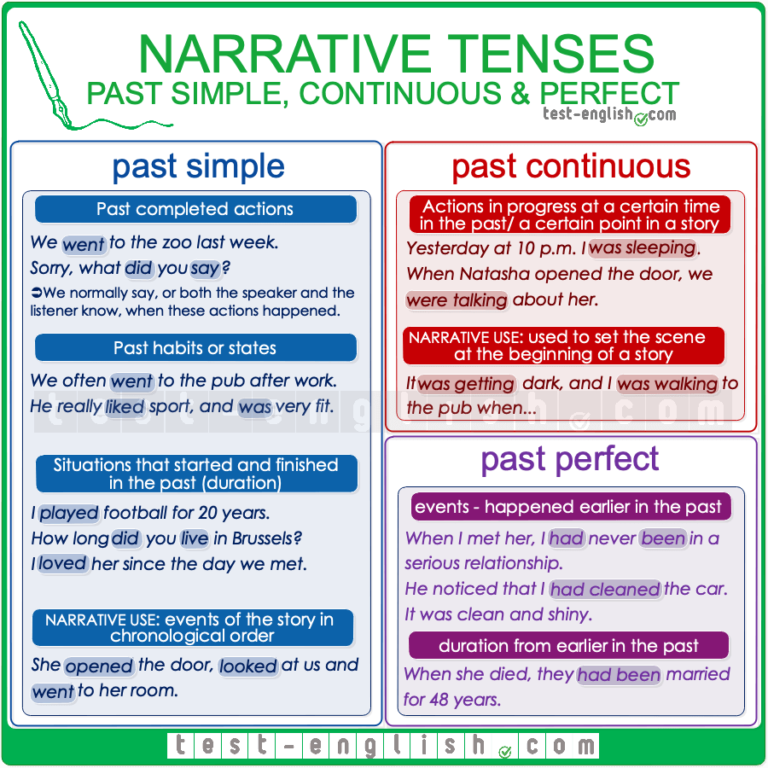
Click on TELLING STORES FROM THE PAST (Narrative tenses)
Rules for interrogative sentences Rules for imperative sentences Rules optative sentences Rules for exclamatory sentences This is the easiest way to learn direct and indirect narration because I have taught many students through offline and online YouTube channel. I am sure that you can learn narration change by reading the article.
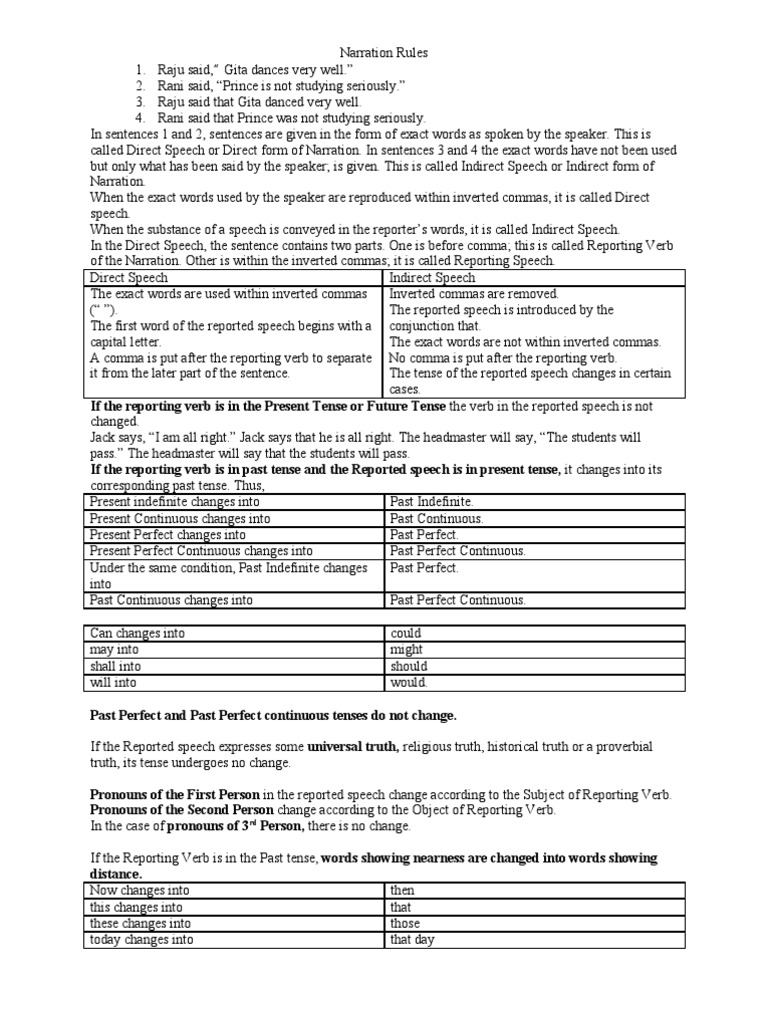
Narration Rules Perfect (Grammar) Grammatical Tense
Narration Rules 1. Raju said," Gita dances very well." 2. Rani said, "Prince is not studying seriously." 3. Raju said that Gita danced very well. 4. Rani said that Prince was not studying seriously. In sentences 1 and 2, sentences are given in the form of exact words as spoken by the speaker. This is

Spoken English Guru Chart
Rule No 1. 1 st Person of pronoun of Reported speech is changed according to the Subject of Reporting verb of the sentence. Direct: He says, "I am in ninth class." Indirect: He says that she is in ninth class.

Direct and Indirect Speech Rules Narration for Different Sentences
Table of Contents. Introduction to Direct Indirect Speech and Basic Changes; Introduction to Narration. Parts of Direct Speech; Basic Changes. Change/Replacement of "Said to":. Narration Rules for Certain Words. 1. Rule One. If the reporting speech is in Past Indefinite Tense, the following certain words in reporting speech will be.

Narration Rules Chart with Examples, PDF, Table
1. The first rule is to pick a reporting verb and time frame or tense in the sentence. What time did the speech take place? The reporting verb is in the present tense when dealing with current, repeated, or recent events. "He says he's hungry, so let's grab a bite to eat." Choose the past tense for recounting a less recent speech.
Speech For Class Monitor Election In English
Rule 1 - Direct To Indirect Speech Conversion - Reporting Verb When the reporting verb of direct speech is in past tense then all the present tenses are changed to the corresponding past tense in indirect speech. Direct to indirect speech example: Direct: She said, 'I am happy'. Indirect: She said (that) she was happy.

Changes of Pronouns in Reported Speech Rules & Examples • 7ESL Reported speech, Direct and
Rule No. 01 If the reporting verb is in the Present Tense, there is no change in the tense used in the reported speech when direct speech is transformed into indirect speech.
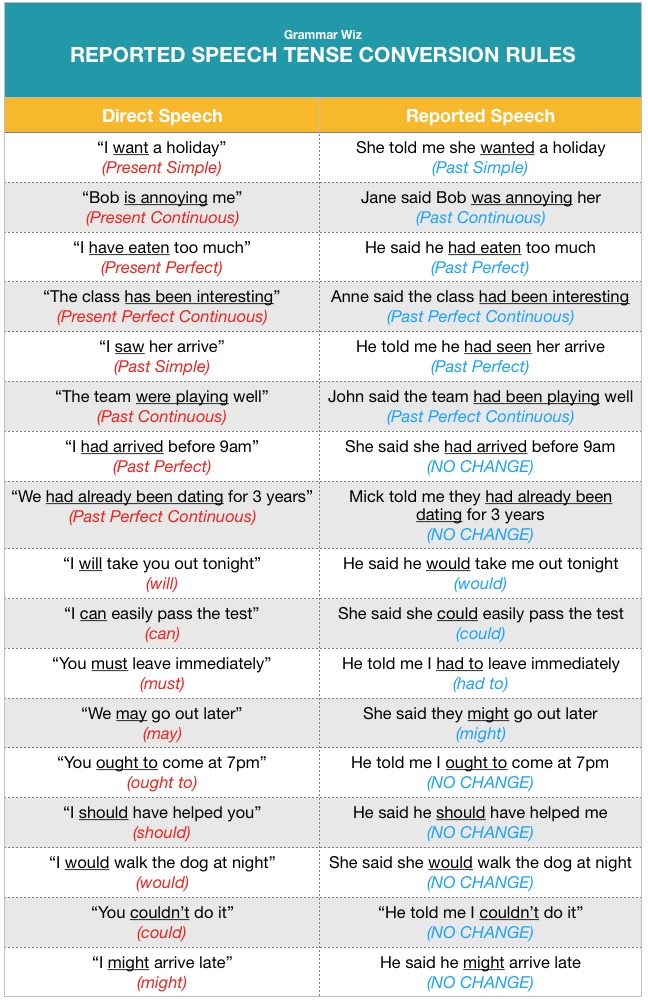
reported speech rules table
Direct and Indirect Narration Rules. Following are the steps to convert the Direct/Indirect Speech and also let's discuss Direct and Indirect Speech tenses rules in detail. Step 1: Write down the reporting verb that is used to determine the Indirect Speech's tense. Step 2: Change the position and time to reflect the speaker's actual location.